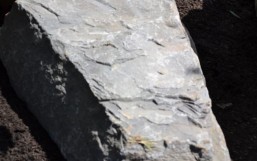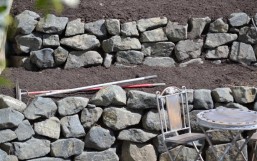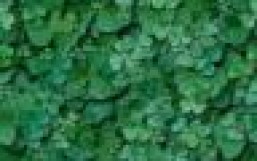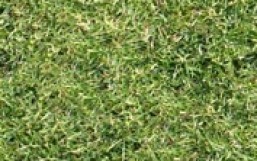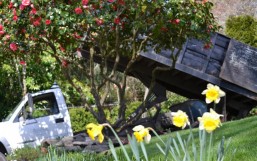In a recent TED talk about taking imagination seriously, Janet Echelman, creator of billowing, voluptuous fabric installations the size of buildings, described the unexpected trajectory of her fascinating career. Echelman’s work has evolved from large-scale fishnet sculptures created from traditional craft methods to engineered installations designed with software and made from high-tech materials. This is an unlikely occupation for Echelman who did not train as an engineer, architect, or sculptor.
Fourteen years ago, Echelman was a painter traveling in India on a Fulbright. At that time, she had been pursuing painting independently after applying to and receiving rejections from seven art schools. She planned to exhibit a series of paintings in India but her paints never arrived. She tried to switch to bronze casting instead but found the process too expensive and the results too heavy. Unsure of how to proceed, Echelman took what became a fortuitous walk along the beach that took her career in a new direction.
While walking on the beach, Echelman noticed the local fisherman bundling their nets into mounds on the sand. Though she had passed by the same scene numerous times before, she suddenly saw it with fresh eyes as a potential new approach to sculpture, “a way to make volumetric form without heavy, solid materials.” She began collaborating with the fisherman, learning their techniques and creating her own variations, fashioning the fishnets into large sculptural pieces. She hoisted her first work, a self-portrait humorously titled “Wide Hips,” on poles to be photographed and found the result “mesmerizing”: “It revealed every ripple of wind in constantly changing patterns.”
Echelman continued studying craft traditions and collaborating with artisans. She began working with lacemakers in Lithuania, appreciating the result of the fine detail in her work but also came to realize that she wanted to make larger pieces. Rather than creating an object to look at, Echelman wanted to make something more experiential, “something you could get lost in.” She returned to India where she again worked with fisherman, this time to create a net of 1.5 million hand-tied knots. The sculpture was temporary installed in Madrid where one of the thousands of people who saw it was urbanist Manual de Sola-Morales, who at the time was redesigning the waterfront in Porto, Portugal. He asked Echelman to create a permanent installation in a traffic circle in Porto. Though Echelman had doubts that she could create something durable, engineered, and permanent that would express her work’s idiosyncratic, delicate, and ephemeral qualities, she nevertheless accepted the challenge.
The Porto installation took three years to complete. Echelman spent two years searching for a fiber that could survive ultraviolet rays, salt air, and pollution, and was soft enough to move fluidly in the wind but strong enough to survive a hurricane. In an effort to give the form a precise shape that would allow for gentle movement, she sought the help of Peter Heppel, an aeronautical engineer who designed sails for the America’s Cup Racing Yachts. Since a hand-tied net would not survive a hurricane, she also worked with an industrial fishnet factory where she learned how to create lace from their machines. Lastly, in order to support the net, she had a 45,000 pound steel ring erected in the traffic circle. When the 50,000 square foot lace net was finally installed, it gave Porto a sense of place, and though it was a permanent, engineered piece, Echelman felt her aesthetic was not lost in translation. Standing under the net, she said she felt sheltered but also connected to the limitless sky, and the moment was life altering. She decided she wanted to “create an oasis of sculptures in spaces of cities around the world.”
Echelman has gone on to create installations in several other cities, including one for the Biennial of the Americas in Denver, where she determined a new soft structural method that would enable her to model and build structures at the scale of skyscrapers. The Biennial committee commissioned Echelman to create something that would “represent the 35 nations of the Western Hemisphere and their interconnectedness.” Echelman had read about the earthquake in Chile and the tsunami that rippled across the entire Pacific Ocean. She was fascinated by the fact that the event shifted the earth’s tectonic plates, sped up the planet’s rotation, and shortened the length of the day. She obtained data from the National Oceanic and Atmospheric Administration (NOAA) and translated it into a sculpture entitled 1.26 for the number of microseconds the day was shortened. Since the sculpture’s shape was too complex to support with a steel ring, Echelman replaced the metal infrastructure with a soft, fine mesh of fiber fifteen times stronger than steel. The result was a sculpture that was entirely soft and light enough to tie in into buildings, literally becoming part of the city fabric.
As a result of this piece, Echelman has decided that she wants to “create voluptuous, billowing forms at the scale of buildings” in cities around the world, especially in places she feels need them the most. She is also exploring new methods for other installations, including one for the Historic Philadelphia City Hall where she wants to create something lighter than netting to compliment the building’s architecture. Instead of working with lace, she has been experimenting with tiny atomized particles of water to create a dry mist that could be shaped by wind and that people could interact with and move through without getting wet. Using this capability, she wants to trace the paths of subway trains above ground in real time, revealing an “X-ray” of the city’s circulatory system.
In the meantime, Echelman says her artistic horizons continue to grow. Recently a friend called to tell her that an attorney in Phoenix who had never had an interest in art and had never visited the local art museum asked everyone in the office to go outside and lie under one of Echelman’s sculptures. They all lay out there together in their business suits sharing a feeling Echelman knows well, “the rediscovery of wonder.”
This guest post is by Shannon Leahy, ASLA 2011 Summer Intern


